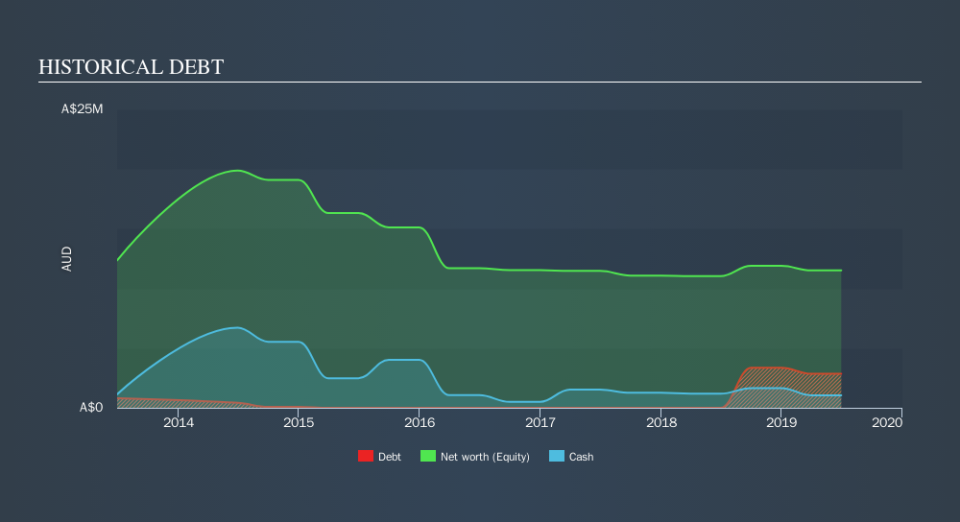High Peak Royalties (ASX:HPR) Is Making Moderate Use Of Debt

David Iben put it well when he said, 'Volatility is not a risk we care about. What we care about is avoiding the permanent loss of capital. So it seems the smart money knows that debt - which is usually involved in bankruptcies - is a very important factor, when you assess how risky a company is. We note that High Peak Royalties Limited (ASX:HPR) does have debt on its balance sheet. But the real question is whether this debt is making the company risky.
When Is Debt Dangerous?
Debt is a tool to help businesses grow, but if a business is incapable of paying off its lenders, then it exists at their mercy. In the worst case scenario, a company can go bankrupt if it cannot pay its creditors. While that is not too common, we often do see indebted companies permanently diluting shareholders because lenders force them to raise capital at a distressed price. Of course, plenty of companies use debt to fund growth, without any negative consequences. The first step when considering a company's debt levels is to consider its cash and debt together.
Check out our latest analysis for High Peak Royalties
What Is High Peak Royalties's Debt?
The image below, which you can click on for greater detail, shows that at June 2019 High Peak Royalties had debt of AU$2.85m, up from none in one year. However, it also had AU$1.05m in cash, and so its net debt is AU$1.80m.
How Healthy Is High Peak Royalties's Balance Sheet?
We can see from the most recent balance sheet that High Peak Royalties had liabilities of AU$441.5k falling due within a year, and liabilities of AU$2.70m due beyond that. Offsetting this, it had AU$1.05m in cash and AU$146.6k in receivables that were due within 12 months. So its liabilities outweigh the sum of its cash and (near-term) receivables by AU$1.94m.
Given High Peak Royalties has a market capitalization of AU$20.8m, it's hard to believe these liabilities pose much threat. Having said that, it's clear that we should continue to monitor its balance sheet, lest it change for the worse. The balance sheet is clearly the area to focus on when you are analysing debt. But it is High Peak Royalties's earnings that will influence how the balance sheet holds up in the future. So when considering debt, it's definitely worth looking at the earnings trend. Click here for an interactive snapshot.
In the last year High Peak Royalties wasn't profitable at an EBIT level, but managed to grow its revenue by187%, to AU$647k. So there's no doubt that shareholders are cheering for growth
Caveat Emptor
Over the last twelve months High Peak Royalties produced an earnings before interest and tax (EBIT) loss. To be specific the EBIT loss came in at AU$87k. When we look at that and recall the liabilities on its balance sheet, relative to cash, it seems unwise to us for the company to have any debt. So we think its balance sheet is a little strained, though not beyond repair. Another cause for caution is that is bled AU$272k in negative free cash flow over the last twelve months. So to be blunt we think it is risky. For riskier companies like High Peak Royalties I always like to keep an eye on whether insiders are buying or selling. So click here if you want to find out for yourself.
Of course, if you're the type of investor who prefers buying stocks without the burden of debt, then don't hesitate to discover our exclusive list of net cash growth stocks, today.
We aim to bring you long-term focused research analysis driven by fundamental data. Note that our analysis may not factor in the latest price-sensitive company announcements or qualitative material.
If you spot an error that warrants correction, please contact the editor at editorial-team@simplywallst.com. This article by Simply Wall St is general in nature. It does not constitute a recommendation to buy or sell any stock, and does not take account of your objectives, or your financial situation. Simply Wall St has no position in the stocks mentioned. Thank you for reading.

